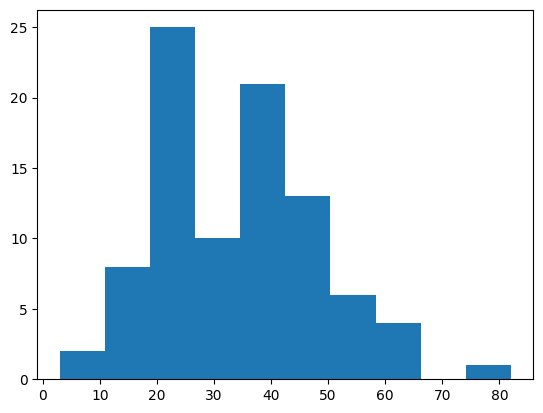Since our last announcement in April, we've been working to make your data collection and processing in ODK more efficient. Below are the highlights of what we've accomplished and a preview of ODK's entity-based future!
 Easier workflow automation and data analysis with pyODK
Easier workflow automation and data analysis with pyODK
ODK Central’s API lets you automate everything from user creation to form updates to data exports. We've recently released a first version of pyODK, a Python-based API client for Central to make that process even easier.
pyODK provides intuitive methods and examples that programmers can build on to make workflow automation (e.g., creating many app users or public access links) and data analysis easier. For example, if you need a histogram of the age values in a census form, here's the code you'd need.

 Webinar: Automating workflows and data analysis with pyODK
Webinar: Automating workflows and data analysis with pyODK
ODK's CTO (Hélène Martin, @LN) will be hosting a webinar on Wed, Oct 19th @ 4 PM UTC to show practical examples of how pyODK can help automate your workflows and data analysis. To get access the recording, go here.
 Take your form building skills to the next level
Take your form building skills to the next level
ODK provides rich functionality that can be mixed and matched without a prescribed structure. This approach allows for great flexibility but also places responsibility on the form designer to define a structure to support their work.
To help with this process, we've published a data collector workflows guide, with sample forms, on the various data collection workflows (e.g., cross-sectional, longitudinal, geospatial) used in ODK and the various features that support each workflow. We recommend reading it before building your next form.
 What's next? Entity-based data collection
What's next? Entity-based data collection
If you use ODK for capturing longitudinal data about people, places, or things, you’ve probably wished ODK managed those entities and linked them to their associated data. Well, we’ve been working on that!
In a few months, we'll adding server-managed datasets to Central. These datasets will automatically compile lists of entities from registration forms and attach them to other forms. Here's a mock up of what these server-side changes will eventually enable in ODK Collect.
Mockup of Collect re-designed for entities. In this example, a guinea worm eradication project needs to track dogs (disease vectors), households (responsible for dogs), and water sources (for treatment).
Whether you need flexible case management or fine-grained tasking or multi-user data entry, we're confident you'll love what's coming in ODK. You can track the progress of our work in the entity-based data collection topic, and as always, we'd love your feedback as we build the future of ODK together.
 The app that helped eradicate wild polio from Africa
The app that helped eradicate wild polio from Africa
Dr. Godwin Ubong Akpan is the Regional Lead of Information systems at WHO AFRO. In his view, ODK was the app that helped eradicate wild polio from Africa. ODK has been used by WHO to collect 500 million data points for disease surveillance and routine immunization in Africa!
So many of you have contributed support, translations, code, feedback, and advocacy to the ODK project over the years. Together, we've made the world a safer place for hundreds of millions of children. Thank you!
You can learn more about our impact in this article on the five ODK-based solutions that helped eradicate wild polio in Africa.


